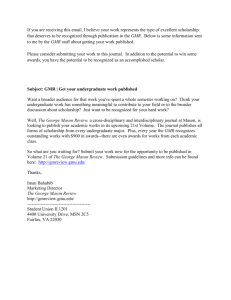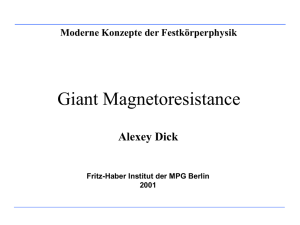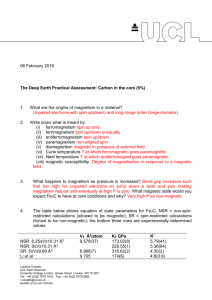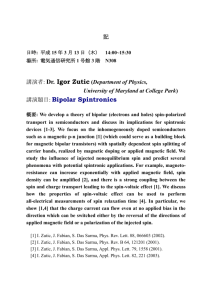APS_GMR - Thales Group
advertisement
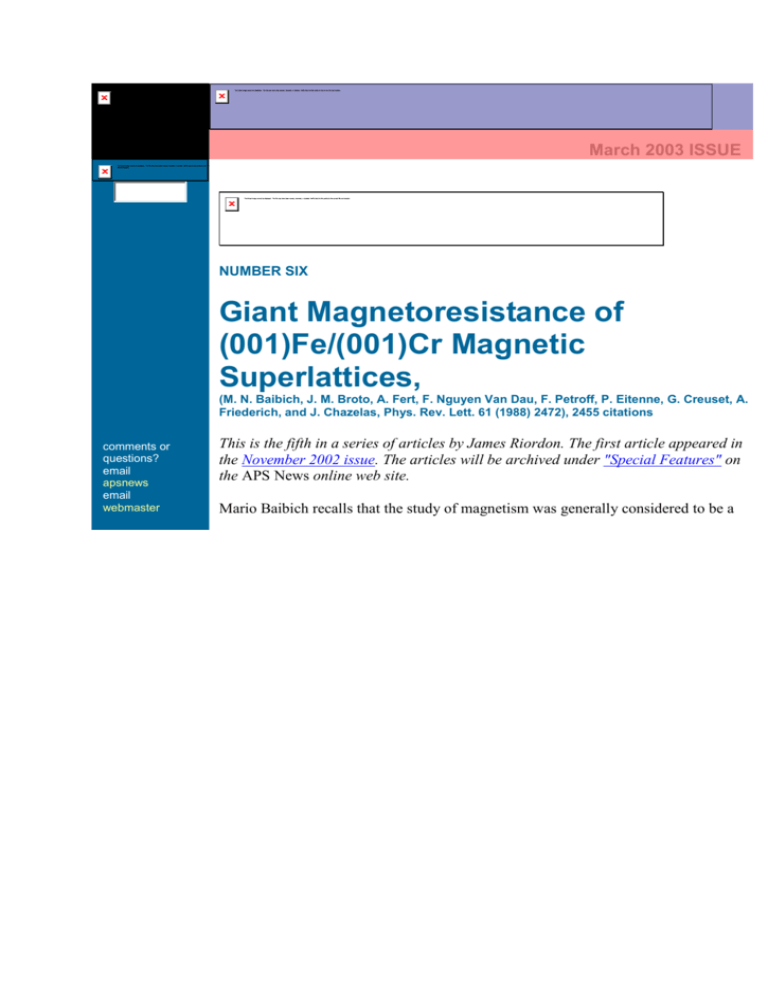
March 2003 ISSUE NUMBER SIX Giant Magnetoresistance of (001)Fe/(001)Cr Magnetic Superlattices, (M. N. Baibich, J. M. Broto, A. Fert, F. Nguyen Van Dau, F. Petroff, P. Eitenne, G. Creuset, A. Friederich, and J. Chazelas, Phys. Rev. Lett. 61 (1988) 2472), 2455 citations comments or questions? email apsnews email webmaster This is the fifth in a series of articles by James Riordon. The first article appeared in the November 2002 issue. The articles will be archived under "Special Features" on the APS News online web site. Mario Baibich recalls that the study of magnetism was generally considered to be a dead end in the 1980's. "Many a friend tried to talk me out of concentrating on this subject," says Baibich. In fact, the field was only in a temporary lull, and the sixth most-cited Physical Review Letter that the Brazilian physicist coauthored while working as a postdoc with a group of researchers in France was just the thing to perk it up. The discovery of giant magnetoresistance (GMR) turned the study of layered magnetic structures into one of the most dynamic, and profitable, fields in physics in the last quarter century. GMR is the dramatic variation in the resistivity of multilayered thin film structures that occurs with application of a magnetic field. The applied field changes the relative orientations of magnetic regions in some of the layers. When the fields in adjacent layers are aligned, electrons with spins oriented parallel to the fields (up electrons) pass easily from one layer to another, and antiparallel (down) electrons are strongly scattered, leading to low resistivity for up electrons. If adjacent regions have antiparallel fields, both spin up and spin down electrons are strongly scattered, and the resistivity is high for all electrons. It is the spin-based explanation for GMR that has led to the use of the term "spin valve" for various GMR devices. Magnetic sensors and the read heads in high density computer storage media are among the common devices to benefit from GMR, and nonvolatile, low-power, highdensity magnetic random access memory (MRAM) may soon replace dynamic random access memory (DRAM) in personal computers. Arguably, the most promising GMR-derived applications are still in their infancy; spin-selective active devices, such as transistors, are only now being perfected, but they have already inspired a new term in the scientific nomenclature: spintronics. Potentially, spinselective components may even offer a practical avenue to much-hyped optical and quantum computers. Albert Fert, a coauthor on the PRL paper and the group leader who headed up the GMR research at the time, points out that the initial discovery of GMR as well as the subsequent commercial success of related technology is a shining example of the benefits that can result from collaborations between academia and industry. "In the middle eighties," explains Fert, "I realized that progress in the technology for the fabrication of thin multilayers had reached the point that it was possible to exploit my previous fundamental works on spin-dependent transport and obtain novel effects in artificial nanostructures." Inspired by the discovery two years earlier of antiferromagnetic coupling between iron layers separated by a thin layer of chromium by Peter Grunberg and coworkers at the Jülich Research Center in Germany, Fert approached Thompson-CSF (now the Thales Corporation), and arranged for the fabrication of more elaborate multilayer superlattices with the company's new molecular beam epitaxy machine. Although Fert, Baibich, and their colleagues fully expected to see spin dependent conduction effects, the magnitude of the effect was startling. "To tell you the truth," says Baibich, "after the first experiment I took apart the whole system to check for possible short circuits." The researchers had expected to see effects on the order of a few percent, but instead saw the resistance drop by a factor of two." As [our coauthor] Jean Marc Broto said at the time," recalls Baibich, "we could have used a multimeter to measure the effect!" "I knew from my work on iron-based alloys that the couple iron-chromium was a good system for spin dependent conduction effects," adds Fert, "but I was afraid of the possible drawbacks of the interface roughness to blur the spin dependence. It was a good surprise to see magnetoresistance at so high a level. Our luck was that, finally, the GMR was not requiring interfaces of very high quality."
